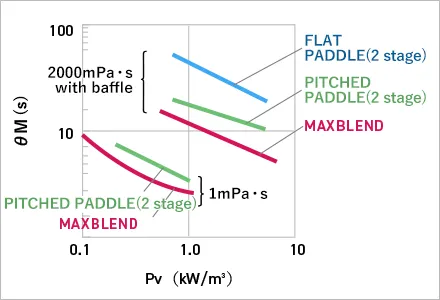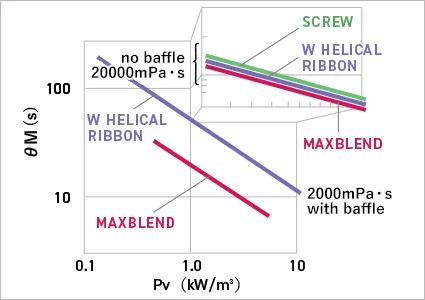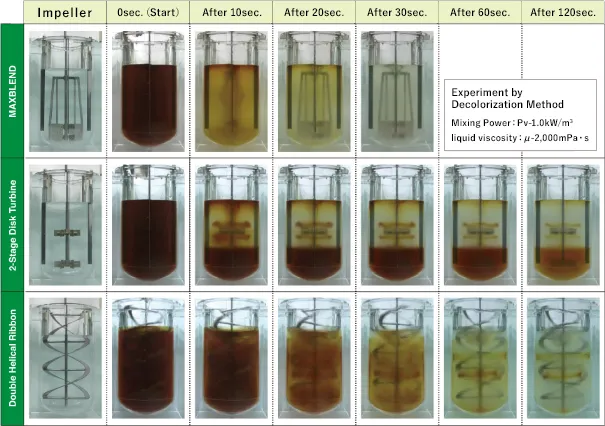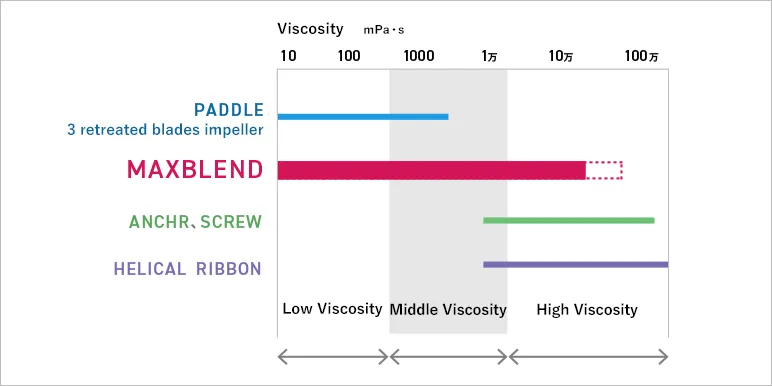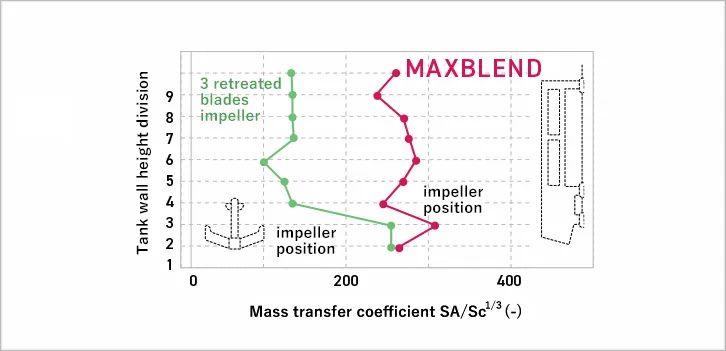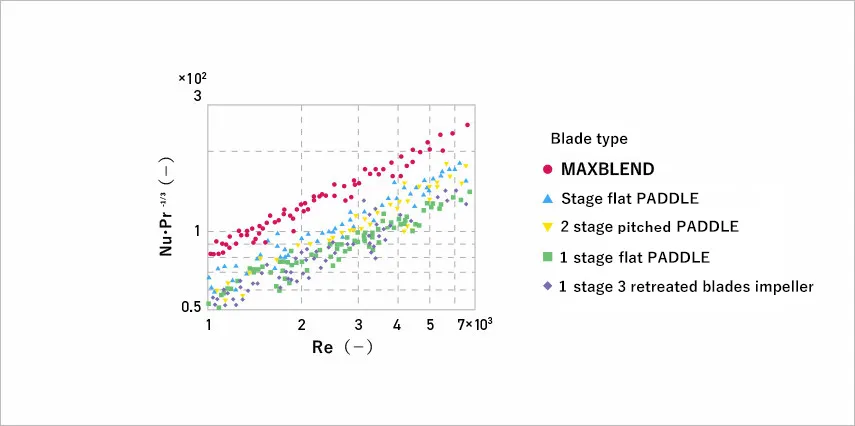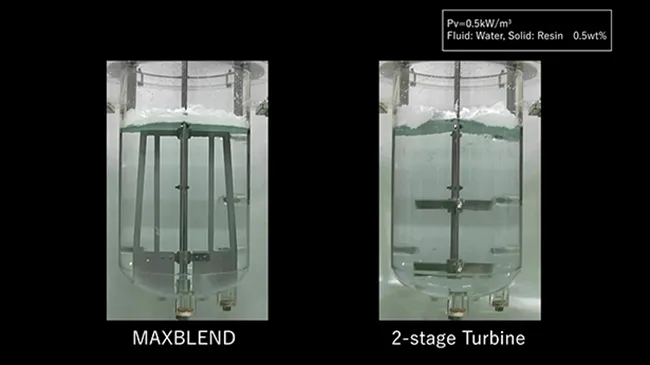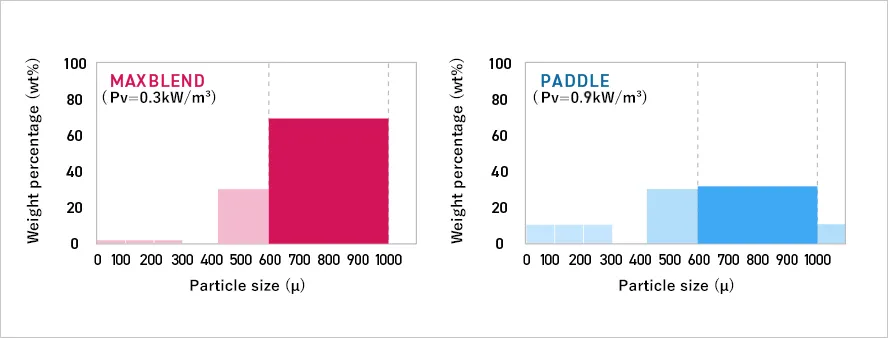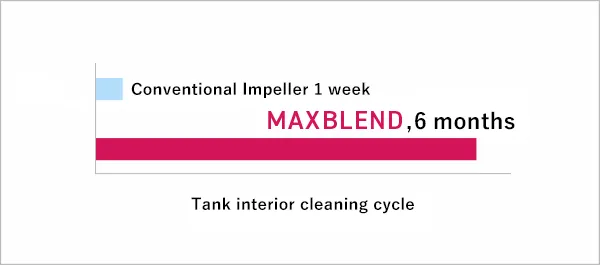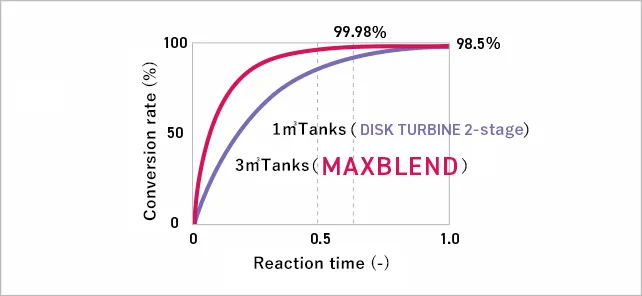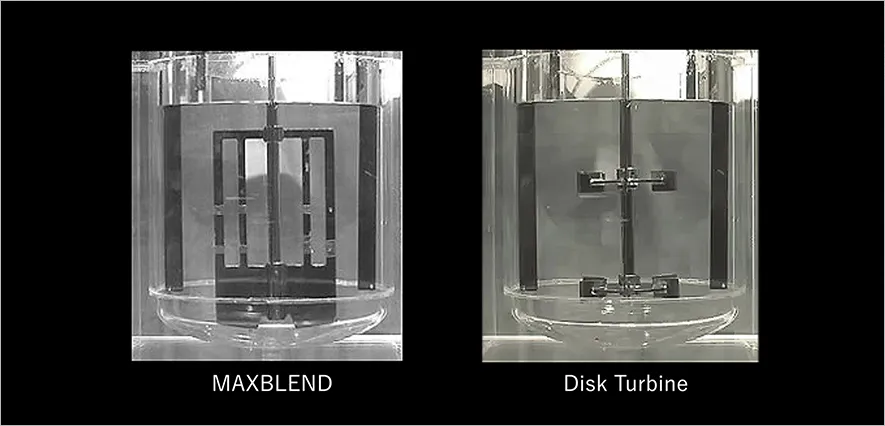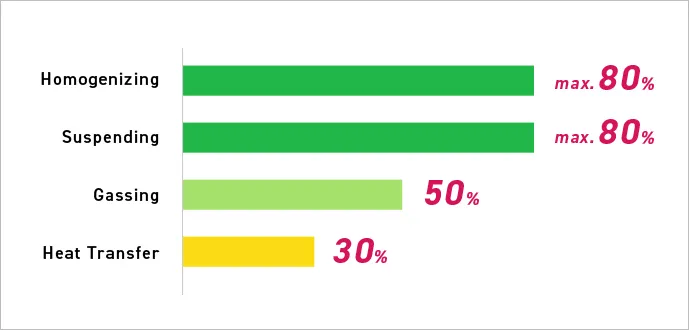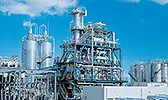CHECK POINT 01 Complete mixing in short time
The homogeneous mixing in short time is enabled by the ideal flow pattern as compared with the previous impeller models.
The graphs on the right show on the right the relationship between the mixing power and complete mixing time.
If the mixing power is as shown on the right, the homogeneous mixing is enabled in short time. These graphs indicate the excellent mixing characteristics of MAXBLEND that requires only a lower power to obtain the mixing status of the same level.






